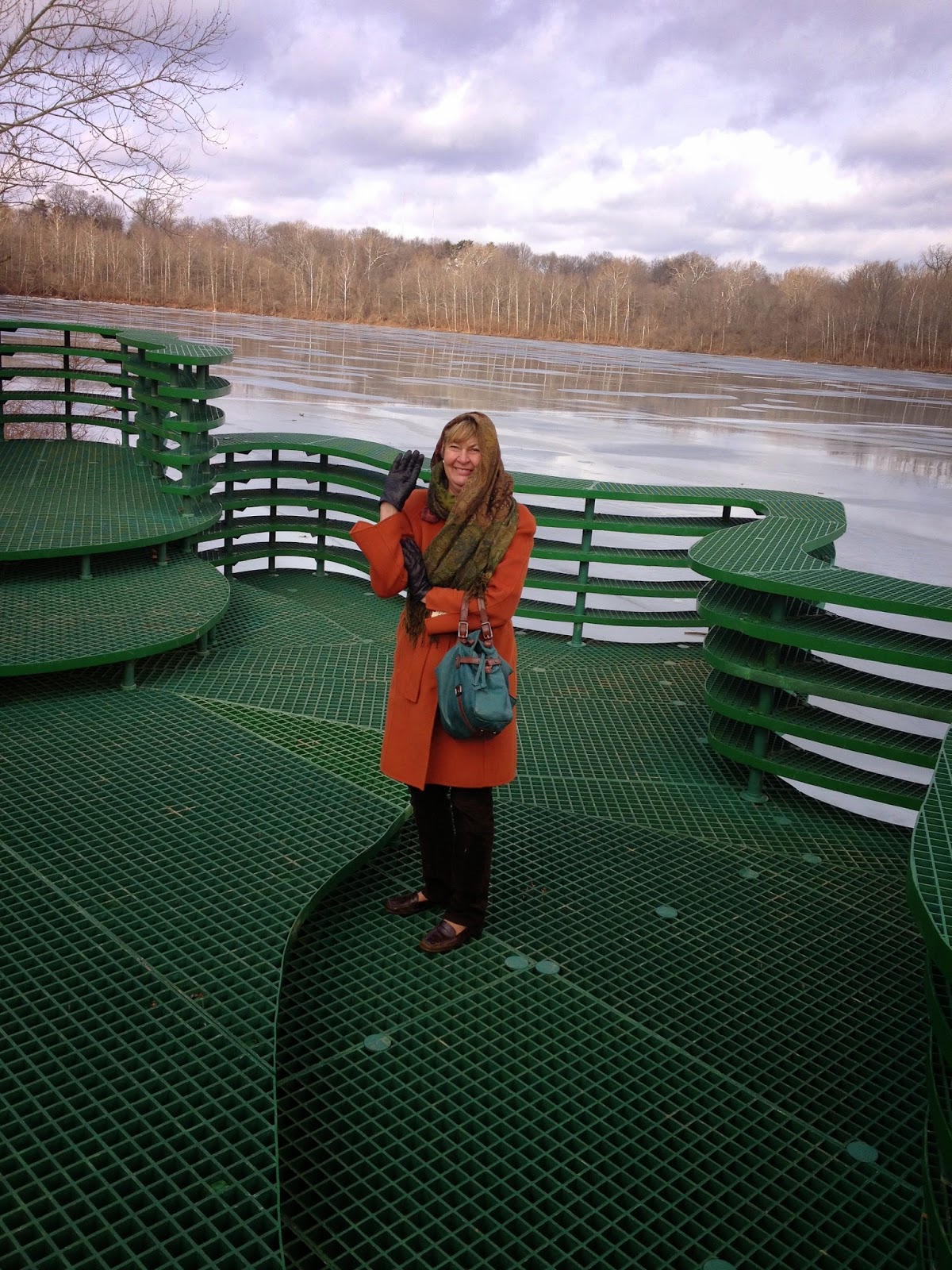They said it was risky to plan a trip to a sculpture
park in January, so we built a few extras into the excursion to mitigate
adversity. We were eight brave souls willing to make the trek on behalf of our
docent corps from Laumeier Sculpture Park in a rented utility van from
Enterprise Rent-a-Car on January 17-18.
In the process of planning the weekend we bundled
into it a visit to Columbus, Indiana which has a rich history of architectural
design innovation and excellence fostered by
industrialist and philanthropist J. Irwin Miller. A tour of the house he and
his wife Xenia Simons Miller commissioned in 1953 with the architect
behind our iconic arch, Eero Saarinen seemed like a good idea. Indeed it was.
The midcentury house and garden was stunning and we enjoyed VIP treatment as
the visits to the property are limited to 13 or fewer people at a time.
The Columbus, Indiana Visitors Bureau suggested we
stay at the Indigo Hotel and so we did. That decision permitted us to soak in the
culture of a community inspired by quality art and design. Miller was a driver
behind a foundation that gave the community an incentive to select from a list
of architects with much success in executing some remarkable spaces. Around
every corner in that small town there was another surprise of sculpture,
landscaping and artwork. As a group we were satisfied that the effort to get up
early on a Saturday morning and to drive four and one half hours to Columbus
was well worth it. It was unseasonably warm with temperatures in the 50s.
On Sunday it was a bit cooler and the morning
brought a little precipitation. Although we were almost reluctant to leave the
town we had to get to Indianapolis – an hour away by car. Located on 100 acres adjacent to the Indiana Museum of
Art main campus, The Virginia B. Fairbanks Art & Nature Park consists of
woodlands, wetlands, meadows, and a 35-acre lake. 100 Acres is one of the
largest museum art parks in the country and one of only a few to feature
ongoing commissions of temporary, site-responsive artworks. Naturally the
docent corps from Laumeier Sculpture Park wanted to get a look up close and
personal.
Docent Karen Bower was willing to step up in the off-season
to lead us on a tour of the park – and before the museum even officially
opened. In spite of patches of ice on the trials around the lake and some muddy
places we navigated the grounds with pleasure. Karen’s guidance for nearly
ninety minutes was a first-rate inspiration to all of us.
The visit to the Indianapolis Museum of Art was a
bonus if not only for the terrific works on view from the permanent collection
but also for the special exposition of Georgia O’Keeffe which was FREE as a
gesture to in honor of the Martin Luther King Jr. holiday.
Hank & Ann Bauer, Mary & Mike Drury, Shelia
Hoffmeister, Clara Coleman, June Shaw (Photo by Wes Morgan - not in
picture)
...and a group shot by Hank with me in it...(back)








